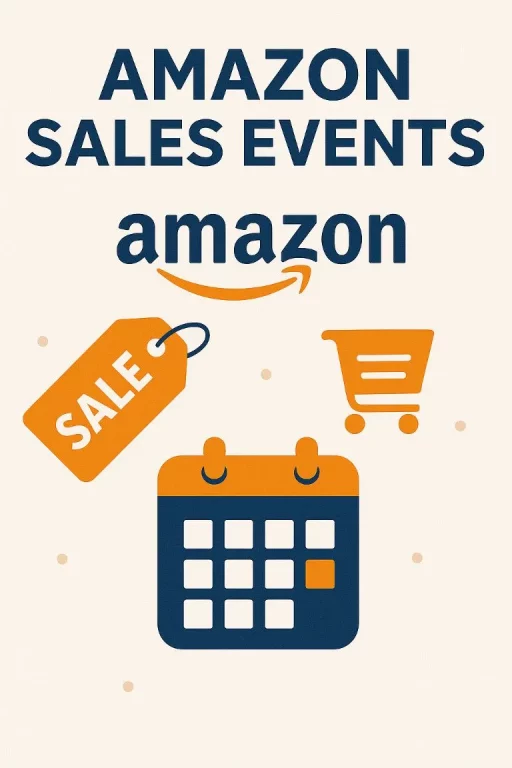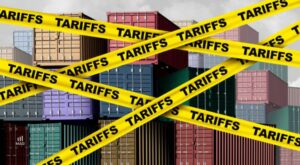
Amazon sales events aren’t just seasonal spikes, they’re consistent sales drivers that sellers can tap into.
Getting shoppers to spend consistently can be tough, especially when they watch their budgets closely. This caution is evident in recent findings; according to the latest McKinsey & Company ConsumerWise survey, consumers explicitly stated plans to reduce their spending.
This uncertainty affects sales momentum on the platform, and sellers certainly feel this pressure. To counter this, Amazon has a clear strategy: using frequent Amazon sales events. These planned promotions create regular buying opportunities, keeping customers engaged and spending throughout the year.
Amazon sales events multiply to keep shoppers engaged and spending
Statista"According to Amazon-selling brands, Black Friday was the top sales driver, with one-third citing it as the most impactful event, followed by Prime Day, which boosted sales for 17% of respondents."
According to an EMARKETER article, Amazon is doubling down on sales events in 2025 as a strategic way to drive consumer purchases across the calendar year. Rather than relying solely on major retail tentpoles like Prime Day, the company is launching a series of targeted promotions to keep value-focused shoppers consistently engaged.
Prime Day, Amazon’s flagship event, is reportedly doubling in length this year, stretching its promotional power over a longer buying window.
Smaller, category-specific events are now a central tactic. Recent examples include:
Big Spring Sale (March 25–31), covering 35 categories such as apparel, beauty, and home.
Amazon Book Sale (April 23–28), promoting titles across genres.
Amazon Pet Day (May 13–14), aimed at pet owners looking for savings on supplies and food.
Additional sales like the Summer Beauty Haul and Memorial Day deals are expected to return, contributing to a steady drumbeat of incentives that extend well beyond the traditional Q4 shopping season.
These events are not just about volume, they’re strategic. They attract deal-seeking consumers while helping Amazon expand its footprint in niche verticals like books and pet supplies.
There’s also a ripple effect for brands. Amazon sales events spark increased ad spend from sellers targeting these moments, which in turn boosts Amazon’s growing ad revenue.
By staging multiple sales throughout the year, Amazon not only stays top-of-mind for deal-seeking shoppers, but also gives sellers recurring opportunities to tap into heightened demand and boost their visibility.
Amazon sales events calendar
As Amazon continues to build momentum through strategic shopping events, sellers can benefit by planning for a full promotional calendar that spans the rest of the year. These dates align with consumer buying cycles and seasonal shopping peaks, giving brands the chance to capture attention and drive conversions.
Here’s a month-by-month breakdown of notable Amazon sales events and seasonal opportunities for the remaining months of 2025:
May
May 11: Mother’s Day – Expect a surge in gifting categories like beauty, jewelry, and home.
May 26: Memorial Day – Kick off summer sales across outdoor, apparel, and travel-related products.
June
June 15: Father’s Day – Highlight gadgets, tools, and sporting goods.
June 19: Juneteenth – A chance to align with social values through curated promotions.
July
July 4: Independence Day – Short holiday window, but ideal for patriotic-themed or summer gear.
Amazon Prime Day (TBA) – Amazon’s flagship event, expected mid-July, runs for two days and is critical for major sales spikes across categories.
August
No federal holidays, but a prime opportunity to run Back-to-School promotions that extend into early September.
September
September 1: Labor Day – End-of-summer sales and clearance events.
September 23: Rosh Hashanah – Good timing for specialty products and gifts.
October
October 2: Yom Kippur
October 13: Columbus Day / Indigenous Peoples’ Day / Canadian Thanksgiving – Seasonal tie-ins with fall-themed merchandise.
October 31: Halloween – Huge potential in costumes, candy, and décor.
Prime Big Deal Days (TBA) – Expected mid-October, this event spans five days and offers sellers another boost before the Q4 rush.
November
November 27: Thanksgiving
November 28: Black Friday
Turkey 5/Turkey 12 (TBA) – Amazon’s extended BFCM promotion window is now up to 12 days, beginning as early as November 20.
December
December 1: Cyber Monday
12 Days of Deals (starting Dec. 2) – Daily category-themed promos that give sellers in niche verticals a chance to shine.
Prime Day, biggest Amazon shopping event
Details about Prime Day 2025, one of the most significant Amazon sales events, are starting to surface for sellers. According to information shared in Will Haire’s LinkedIn newsletter, Amazon has officially opened deal scheduling for the event.
This year’s US Prime Day is set to be the longest ever, spanning four days instead of the usual two. The extended duration aims to surpass 2024’s sales records, where independent sellers contributed to over 200 million items sold.
Several updates are noted for the 2025 event, as highlighted in the newsletter:
- The four-day schedule provides sellers more time to generate traffic and sales.
- Additional placements will be available for Prime-Exclusive Best and Lightning Deals that offer discounts of 40% or more.
- New options are available for selecting FBA inventory shipment windows.
Sellers need to be aware of several important deadlines mentioned:
- May 23: Final day to schedule Best Deals and Lightning Deals.
- May 5 – Event End: Submit Prime Exclusive Discounts (must close 6 hours before the event ends).
- June 9: FBA inventory shipments using minimal shipment splits must be sent.
- June 18: FBA inventory shipments using Amazon-optimized splits are due.
Various types of great deals are available for sellers to participate in:
- Best Deals: Require a minimum 15% discount and are eligible for homepage features.
- Lightning Deals: Need at least 20% off and are scheduled by Amazon for high visibility.
- Prime Exclusive Discounts: Minimum 15% off, shown in search results and product detail pages.
- Prime Member Coupons: Offer at least 5% off and appear across event placements.
To assist sellers, Amazon has released a Prime Day Readiness Playbook in Seller Central. This resource covers deal creation, inventory planning according to deadlines, and promotional strategies.
Key actions for sellers include reviewing the playbook, planning and submitting deals via Seller Central before deadlines, and preparing adequate inventory. Sellers should note that official Prime Day 2025 details remain confidential.
While Amazon’s public announcement about the event is expected in late June, sellers should start planning now to take full advantage of the shopping momentum, whether by building a strategy in-house or partnering with an experienced Amazon agency.
Driving conversions through external traffic during Amazon sales events
As Amazon sales events continue to fuel buying behavior, sellers are finding that optimized listings alone aren’t enough. According to this ChannelSight report, external traffic plays a critical role in amplifying visibility and driving conversions during peak sales periods like Prime Day.
ChannelSight highlights using your own channels, like social media, your website, and email lists, effectively. These platforms are key for promoting the deals your brand plans to offer during the sale.
External traffic can often be a cost-effective way to direct shoppers to your Amazon product pages. Email, in particular, offers a strong opportunity to re-engage potential customers who may convert with a compelling discount.
While impulse buys happen, many shoppers actively search for specific deals during Amazon sales events. External promotion helps capture these intentional buyers.
Using tools like “Where to Buy” tracking links can improve marketing efforts. These links help simplify the customer journey and allow sellers to track which external channels lead to actual purchases.
Steven Pope, My Amazon Guy founder"External traffic can boost Amazon rankings during launch, but it works best with aligned pricing, ads, and testing."
Economic pressures could fuel spending during Amazon sales events
Amid growing concerns over economic uncertainty and possible tariff hikes, shoppers may turn to Amazon sales events like Prime Day to make strategic purchases.
Anticipating future price hikes due to proposed tariffs, many consumers plan to stock up on essentials and big-ticket items during Prime Day while prices remain low.
With inflation concerns growing, shoppers are increasingly drawn to Prime Day’s deep discounts as a way to maximize their spending power.
Products expected to be impacted by tariffs—like electronics and home goods—may see higher demand as consumers prioritize these categories during sales events.
While inflation and tariff talks continue to stir uncertainty, Amazon’s promotional events are emerging as a reliable way for consumers to buy smarter and earlier.






